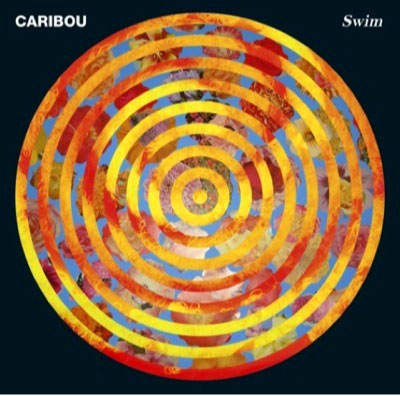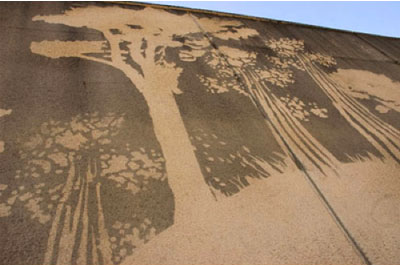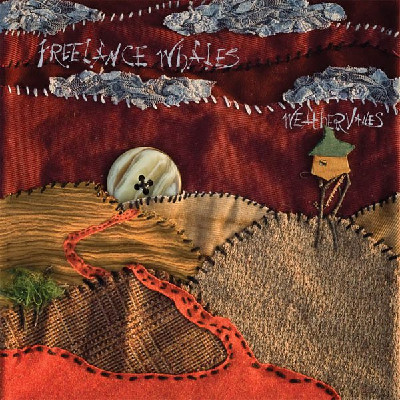


![]() When creative fashion designers such as Yohji Yamamoto or Raf Simons want to try their hand at creating sunglasses, they call on Simon Jablon, the owner of the London-based eyewear brand Linda Farrow. The company boasts an unparalleled heritage. It was established in 1970 by Jablon’s mother, whose name the line carries today. Linda Farrow started out as a fashion designer, before realizing that she could approach eyewear the way designers approach fashion, putting a creative spin on a quotidian product. The London scene quickly caught onto her quirky designs, and Farrow became their go-to brand for sunglasses. Remember those famous wraparound shades that Yoko Ono wore in her photos from the ’70s? They were Linda Farrow.
When creative fashion designers such as Yohji Yamamoto or Raf Simons want to try their hand at creating sunglasses, they call on Simon Jablon, the owner of the London-based eyewear brand Linda Farrow. The company boasts an unparalleled heritage. It was established in 1970 by Jablon’s mother, whose name the line carries today. Linda Farrow started out as a fashion designer, before realizing that she could approach eyewear the way designers approach fashion, putting a creative spin on a quotidian product. The London scene quickly caught onto her quirky designs, and Farrow became their go-to brand for sunglasses. Remember those famous wraparound shades that Yoko Ono wore in her photos from the ’70s? They were Linda Farrow.
The company was successful through the ’80s and then slowly drifted out of sight. It wasn’t until Jablon stumbled upon Farrow’s archive that a light bulb went off in his head. Thus, the company was resurrected. “What makes the company unique,” Jablon said when we caught up at Pitti Uomo in Florence, “is that there was never any business plan behind restarting it. As a child I could never quite grasp my mother’s achievement because you don’t think about your parents in terms of their career. The whole thing happened by chance. One day I was helping out my father, who asked me to clean out our family warehouse. So, I went over there to go through my mother’s stuff. There were boxes upon boxes of samples, and only after handling the eyeglasses I realized that I stumbled upon a treasure.”
(more…)




Merge Records
No one can accuse Caribou’s Dan Snaith of stagnation. The one man behind Caribou’s experimental operation delves into dance music deeper than ever before on his latest full-length, Swim. Looking back rather than forward, Swim re-imagines the rave sounds of the early ‘90s with ‘00s geek-chic style. Snaith’s signature psychedelic swirls oscillate in and out of the arrangements in varying volumes. This provides the backdrop for the minimal techno bumps and distorted vocals Snaith himself is providing. More than the passing reference to Hot Chip and Arthur Russell must be made, as Snaith borrows his ideas generously from Hot Chip’s nerd-electro and Russell’s fringe-disco. The scratchy plinks of “Hannibal” and falsetto-voiced “Leave House” are fodder for adult dance music. The ambient burps and messy synths of “Lalibela” make it sound like it’s being played backwards (if it weren’t for the incomprehensible vocals), where one can snatch a word or two here and there and realize this is the direction the song is meant to go. This is the type of dance music grownups can get with.
After the jump, check out the video for “Odessa”.
Buy this at Other Music or iTunes.
(more…)

![]()

ARO and dlandstudio, section showing green infiltration streets.

We move through New York City largely unconscious of the bodies of water that surround us. Our neighborhoods turn inward, onto streets and parks. Even when we’re on the waterfront our rivers and inlets remain lovely backdrops; we don’t fully understand the forces that move them and the life they support.
In fact the city’s sea level is rising due to global warming, and could be nearly two feet higher fifty years from now. This would endanger much of the city’s existing waterfront, overloading sewers and eroding foundations. The curators of Rising Currents: Projects for New York’s Waterfront, on display now at MoMA through October 11, selected five regions of the waterfront that are particularly vulnerable and asked five local design teams for their solutions.
Their vivid proposals all highlight “soft infrastructure”, that is, broadly-based ecological interventions rather than purely structural ones. So instead of wrapping the shorelines in a concrete super-wall, the teams employ inventive planning, planting, and building to meet the challenge.
Somewhat audaciously, three of the five schemes continue building the city out over the water. ARO and dlandstudio extend the tightly-woven fabric of downtown Manhattan outward, building porous streets from an engineered mesh of concrete and seawater plants.
(more…)

![]()

Todomundo/Nonesuch Records
In one of the unquestionably oddest releases of the year, David Byrne and Fatboy Slim memorialize the notorious First Lady of the Philippines and shoe connoisseur Imelda Marcos (as well as her nanny Estrella Cumpas) with this 22-track concept album. In exploring the life of one of the last century’s most infamous female figures, Byrne and Fatboy Slim have enlisted quite an array of strong women behind the mic, including Sharon Jones, Santigold, Cyndi Lauper, Tori Amos, Florence Welch, Nellie McKay, Natalie Merchant, as well as lone male guest, Steve Earle. In largely writing all lyrics in the first person, Byrne casts his subject as a wannabe disco diva reflecting upon her innocent teen-beauty-queen hopes and doomed dreams for fame, fortune, and power. Throughout the two discs (which also come in a deluxe edition with a DVD of music videos and a 100-page book), it is hard not to think of Andrew Lloyd Webber’s Evita — both in concept and aesthetics. The title track, with Welch (of Florence and the Machine), starts the album with soft-rock flourishes, kitchy cabaret, and Seventies-era strings and horns befitting this twisted take on the Broadway biography.
Audio clip: Adobe Flash Player (version 9 or above) is required to play this audio clip. Download the latest version here. You also need to have JavaScript enabled in your browser.




Shirin Neshat Feature Film Still, Women Without Men, 2009. Copyright Shirin Neshat, Courtesy Gladstone Gallery, New York.

From my regular column in AnOther magazine.
The day of my visit with Shirin Neshat, the internationally renowned Iranian artist, just so happens to be her birthday. I didn’t know this; she tells me upon my arrival at the Soho loft she shares with her partner (in life and art), Shoja Azari. Although Shirin and I have met a few times before and share friends in common, I feel bad about intruding on her special day for something as mundane as journalism. However, I soon realise she’s not much in the mood for celebrating it anyway. In fact, she seems even to be wishing it away. I don’t understand why people are making such a fuss, she says. I don’t really have time to think about my birthday this year anyway. We’re leaving for Toronto tomorrow and there’s still so much to do.
The “so much” Shirin is referring to has to do with pre-release events and official openings of her first feature film, Women Without Men, in various countries. There are emails and phone calls to answer, travel plans to arrange, screenings and parties to attend, and, of course, a deluge of interviews on the horizon. I’m so glad it’s you today, Shirin says, I can just be myself.
She takes visible enjoyment in telling me the story, over Iranian tea and a bowl of green raisins and walnuts. It’s the one thing that seems to excite her out of her birthday humbug and the apparent sense of anxiousness that must accompany such breakthrough periods in one’s life.
(more…)

This famous image, which became known as “Earthrise”, is the first photograph of our world ever taken from space. It was captured over Christmas Eve in 1968, and was published about two weeks later in January 1969. It’s hard to imagine, in our era of infinite and immediate information, where we’ve seen and known already virtually everything there is to see and know, that this was the first time in history that humans had ever looked upon their home with any perspective, as a single, whole, and incredibly small world floating in space.
But it was.
And it was only a little over forty years ago.
Volumes can be written about the philosophical, spiritual, and mythological shifts that this new perspective, necessarily, forces upon us as a species. It was well noted that seeing Earth from this vantage point had a profound emotional impact on the astronauts who were there — as I imagine it must have also affected any human being on Earth who was able to absorb the simple, plain reality the image presented us with.
To me, it’s not surprising that Earth Day was founded within a year of the publication of this photograph, and then inaugurated about seven months later on April 22, 1970, marking the beginning of the modern environmental movement.
(more…)


Banksy, Studio Interior. Films stills courtesy of Paranoid Pictures
Bansky, the famed British street artist whose identity is a closely guarded secret, is a known trickster and provocateur. He gained early attention for hanging his pieces in major museums on the sly, placing them next to the work of masters, and later caused controversy by featuring a live, painted elephant in one of his shows. His newest piece, a documentary called Exit Through the Gift Shop, is another head scratcher, following street art’s evolution from graffitti’s progeny to fine art’s younger brother in a movie that questions not just street art, but art itself.
The film purports to document the life of Thierry Guetta, a French expat who through his obsession with filming everything stumbles upon the burgeoning street art scene. He is introduced to it by a cousin known as Space Invader, and in the course of his adventures meets the scene’s biggest players, including Shepard Fairey of “Obey” fame, and, eventually, Bansky. Guetta, our guide, is the comic relief — a naif asking innocent and frankly stupid questions of the street art superheroes with whom he becomes friends — filming, lending a hand, and occasionally spilling buckets of paint.
The film takes a critical turn when Guetta drops the video camera and picks up a brush. He does so at the urging of Bansky, who makes the suggestion when he sees the disastrous documentary Guetta has produced from his near decade of street art footage.
(more…)


![]()

A Core House for Haiti, by Habitat for Humanity
The numbers are numbing. The January 12 earthquake in Haiti left approximately 1.2 million people homeless, 600,000 of them in the capital city of Port-au-Prince. As the rain and hurricane season begins this month many are still living in shelters constructed from scrap wood and tarps, in informal settlements without adequate power and sanitation.
While the Haitian government oversees long-term redevelopment, private and non-governmental agencies (NGO’s) are taking the lead to provide housing. Some are focusing on overarching strategic work, using their expertise to support other organizations. Architecture for Humanity has developed open-source guidelines for rebuilding, established Community Resource Centers to support NGO builders in the field, and is planning to rebuild schools. The San Francisco based organization Build Change has established simple technical standards for earthquake-resistant construction to guide local and NGO builders.
Many NGO’s are working directly to put up housing. The initial drive is to provide temporary shelters so that people can survive the hurricane season. Teams are searching for quick and economical solutions to help the greatest number of people. Habitat for Humanity began its relief work by distributing thousands of emergency kits packed with twine and tarps to the country. A Home in Haiti, an Atlanta organization that ships camping tents purchased by individual donors directly to the country, has intensified its outreach in recent weeks to beat the impending storms.
(more…)



Photography courtesy of Reverse Graffiti Project

Let’s face it. For every movement, there’s a counter-movement — even in the graffiti world. It appears that the ubiquitous spirit of graffiti in urban areas has finally spawned a new generation of taggers, with one major difference, however: these new deviants prefer to wield cleaning materials rather than cans of spray paint.
In past decade, Reverse Graffiti (an art form that removes dirt, dust, and decay rather than adding paint) has experienced something of a mass migration across the world. Crafty examples can be found on everything from filthy car windows to highway tunnels and exit ramps. Huge projects along with small outbursts have exacted equal exposure in places like San Francisco, São Paulo, the UK, Israel, Germany, and Amsterdam. Though the majority of clean graffiti artists cite environmental concerns and/or political issues as their muse, even big-shot companies like Microsoft and Smirnoff have gotten in on the action, sensing a hip new method of advertisement.
The movement, which traces back to British artist Paul “Moose” Curtis, the self-titled “Professor of Dirt”, is currently enticing new disciples in South Africa. Martin Pace, a student living in Durban, modified Moose’s technique in his own neighborhood for a final school project. Using a metal scrubbing brush instead of a high-pressure water hose, Pace etched a fifty-five-foot timeline of Westville’s architecture into a freeway wall. Since then, Pace has recruited a few of his buddies, formed a group called Dutch Ink, and continues to hit the streets, leaving beautiful organic murals behind.
(more…)



Frenchkiss/Mom + Pop Records
Audio clip: Adobe Flash Player (version 9 or above) is required to play this audio clip. Download the latest version here. You also need to have JavaScript enabled in your browser.
Buy this at iTunes.






 Facebook
Facebook Permalink
Permalink Digg
Digg Reddit
Reddit LinkedIn
LinkedIn StumbleUpon
StumbleUpon Tumblr
Tumblr



